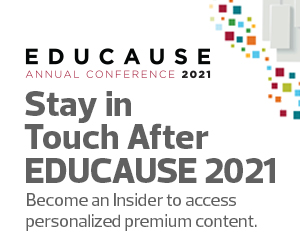1. Rethink Conventional Approaches to Digital Inequity
For higher education leaders, the work to address technology disparities is far from over.
“If we don’t rigorously, actively try to address inequity in our pursuit of innovation, those two things go hand in hand,” Ruha Benjamin, professor of African American studies at Princeton University, said during her keynote speech. Benjamin’s talk covered how emerging technologies — without thoughtful design — can deepen social injustice.
On the other side of the coin, California State University found that on a rudimentary level, access to basic technology remains an issue for vulnerable populations. In summer 2020, the university partnered with EDUCAUSE to conduct a joint research project that uncovered profound inequities in student technology access. The survey found that students needed more understanding and flexibility from their instructors.
“Even though students were finding these creative solutions, they were also encountering some really strict syllabus policies, which creates a lot of anxiety for them,” Jenay Robert, a researcher for EDUCAUSE, told EdTech.
To address digital inequity, compassion and empathy come first.
RELATED: See our full EDUCAUSE 2021 coverage.
2. A Cloud-First Approach Pays Off in Good Learning Experiences
Since the start of the pandemic, the University of Notre Dame worked hard to rapidly expand its virtual desktop infrastructure program to meet demand, and it paid off.
“Our arguments were that we need what the cloud offers — we need scalability, flexibility, adaptability. Those capabilities are really what we were after and how we’re hoping to mature our IT organization,” Brandon Rich, an enterprise architect for the university, told EdTech. “We knew that we were getting better resiliency and scale in the ability to respond to disastrous events, but we could never have imagined anything like this.”
“And from a faculty standpoint, it really provides that consistent environment to support,” said IT Project Manager Kevin Strite. “As long as each student can log in to a browser and they have internet access, they get the same, exact virtual desktop that any other student would have. That consistency for every student and for the faculty member really makes it a win-win.”
Moving forward, the institution will be considering more ways to integrate technology in this cloud-first approach.













